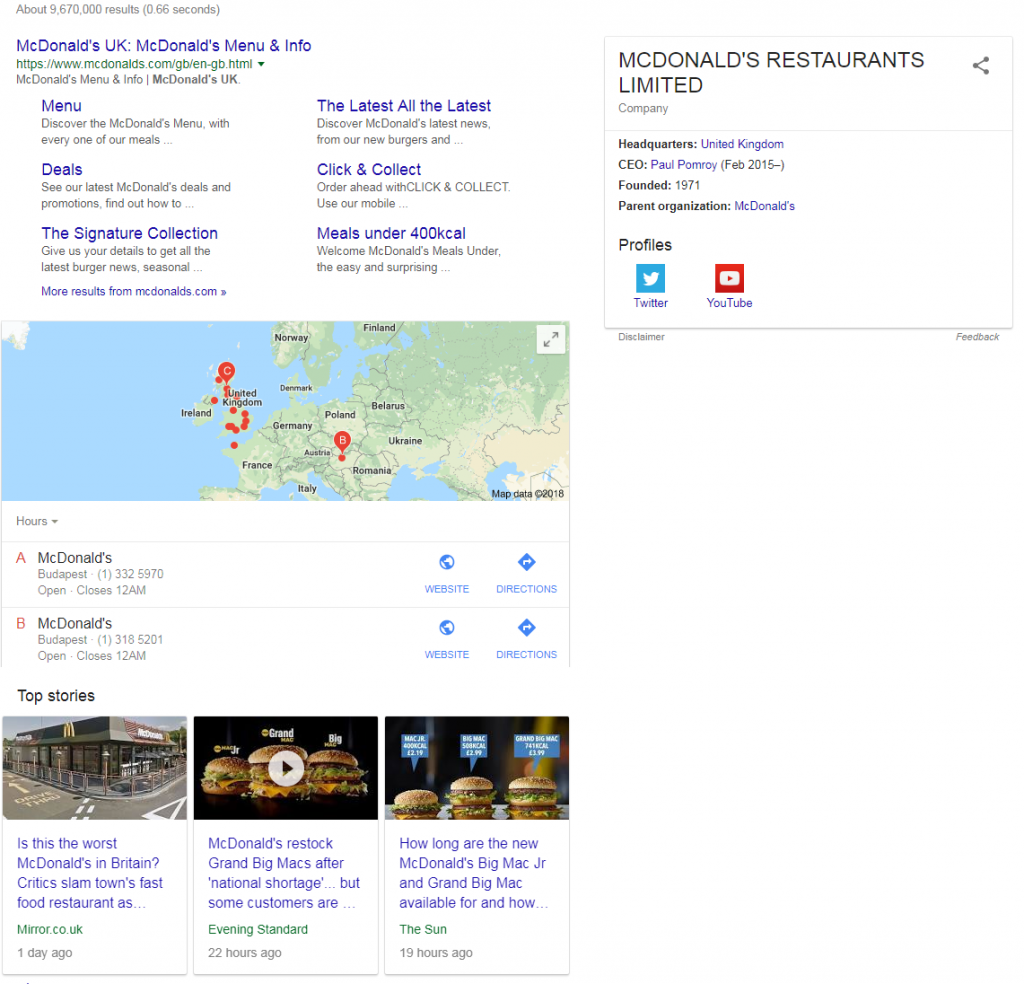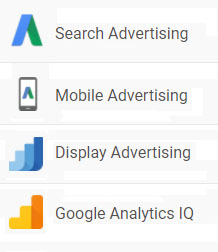Brand analysis
The concept “brand” applies to the logo and slogan of the company, as well as everything else that people can connect to the product or service in question. It marks the brand’s place on the market among competitors. Building a brand is a long and time-consuming process, and you need to apply the right type of communication with your consumers. Brand building is successful if people are able to identify you easily, based solely on the brand name (without any other ways of impression).
Over the years, branding has become an integral part of search engine optimisation. Search algorithms monitor several aspects when defining the brand’s presence and significance on the internet. A few examples: brand mentions on other sites, the brand’s appearance in the hyperlinks pointing to the site, search volumes, and activity on social networks.
How to manage our brand? This is a question that every company owner ponders as it can have a great impact on brand perception. The 4 most important elements of brand management:
I. Reputation management
Both online and offline reputation is crucial. When managing reputation, the most important thing is to focus on social media platforms while also paying attention to traditional methods. Communicational channels to choose from:
- social media
- telephone
- email, letter
- website
- personal encounters
- forum, blog
You may ignore negative feedback, but it’s not a good idea. You have to respond. Otherwise you provide an opportunity for further (negative) comments. You also have to keep an eye on positive comments as – in the future – you might be in need of a partner to promote a new product or message.
II. Brand protection
There are plenty of unprotected brands which is dangerous on several levels. Brand protections has 3 important elements:
- trademarking: The brand name has to be protected by trademark. This is a time-consuming and complicated process, so it’s best to hire a professional.
- social appearance: Nowadays, there are over 500 different social platforms. Most of them are relatively unknown companies, but one of them might become the future Facebook.
- domain: It’s not enough to own a domain name, you also have to think about typos. You have to make sure that people can find you even if they make a spelling mistake when typing.
III. Page 1 domination
Users expect to find certified sites – at least on the first page of Google hits – when they are searching for a brand.

Think about it as a link building project: you need to strengthen your different profiles so that Google knows that these profiles are important for the brand. Examples for elements like this – besides your website itself – are site links, own blogs, social profiles, PR articles, Google maps, etc.
IV. Brand monitoring
Brand monitoring is a strategy that enables us to monitor all sources that contain a given company name, product or service.
Details of brand monitoring
The main elements are usually the following:
Positive comments
When we think about a brand, the first thing that comes to mind is whether there are any negative opinions about it. It’s true that these have to be identified, but positive comments might be just as significant.
Negative comments
No company would like to be shown in a negative light on the Internet. If you check these comments regularly, you can find the most vocal critic and remedy the situation before it causes any more harm.
Competitors
Monitoring competitors is a crucial part of brand monitoring. This way you can find new possibilities to strengthen your own brand, and you can also discover places where competitors are successful.
Trademark infringement
Monitoring can discover trademark infringement. Companies often make huge efforts to protect their trademarks, so it is definitely unpleasant if they are stolen.
Fake sites/products
Companies selling products in the higher price range can often encounter the problem of fake products. Big brands are more likely to suffer from this.
Content leaders
If you are aware of the popular content on the Internet, you can also provide something similar. If you see that a certain topic is fashionable, try to prepare some own material on the subject.
The significance of brand monitoring
The Internet is developing at a crazy pace, and we need to keep up at all cost. As the number of websites is constantly growing, people have more and more opportunities to share their opinion on a certain company or product. You must follow up on these views in order to avoid negative consequences.

What needs to be monitored?
It is important to find the keywords that users apply when mentioning your brand. If the brand name contains a more general expression, it can connect several irrelevant mentions to us which should be avoided. Main elements of monitoring:
- brand name
- different versions of the brand name (misspelling, abbreviations)
- trademarks and copyright
- names of senior executives
- most important products (only if specific)
- competitors
What kind of sites do we examine?
The Internet is a sea of websites. There is an endless number of places where people can talk about the brand or the service. This means that we need a strategy to monitor it in its entirety.
The following places often contain brand mentions:
- social media sites (can be restricted)
- personal and corporate blogs
- forums
- news sites
- video sharing sites
- photo sharing sites
- websites of competitors
- consumer websites
Depending on the market niche, you can achieve more mentions on certain sites than on others.
Managing negative mentions
If you find a negative mention, it is crucial to handle it as soon as possible. A good solution is to connect with the person who wrote the critical comment. This can happen either through the site or other means (for example by email). Move the conversation from the online space to the offline world.
If you cannot get rid of one or two negative comments, it might be effective to respond. By apologizing for the inconvenience you let your clients know that their opinion and satisfaction matters to you.
Trolls
Trolls are users who write critical comments led by negative feelings while hiding behind anonymity.
It is important to remember that the following people should not be considered trolls:
– those who don’t agree with us: There are topics which simply prompt strong emotional reactions with certain people. Everybody shares their opinion and experience in an argument. If someone doesn’t agree with us or asks a respectful question, we don’t consider them to be trolls.
– those who don’t want to read the post: Not everybody is part of our target audience. This is natural. We cannot call someone a troll only because they commented.

What are some examples?
- angry replies concentrating on the brand
- excessive criticism of spelling mistakes
- writing in capital letters and overuse of dramatic statements
- racist, homophobic and disrespectful comments
Profiting from positive opinions
Many brands monitor people who show the brand in a positive light and share their content. They can be rewarded with different promotions or discounts.
Internal brand monitoring
Apart from outward communication, it’s also worth paying attention to the people working for us. Especially if they have listed the company as their workplace or if they play a significant role in the company. It is also crucial to hire a professional to manage the company’s social media profiles.
All in all, brand monitoring is extremely important. If you don’t know what is being said about you, you might be in for an unpleasant surprise a few months later.
Our service enables you to map your brand’s entire presence on the Internet.
Get a quote.
Free online consultation
About your website, competitors, on-line marketing presentation (with proposal, quotes)

Get a Quote
Our certifications





